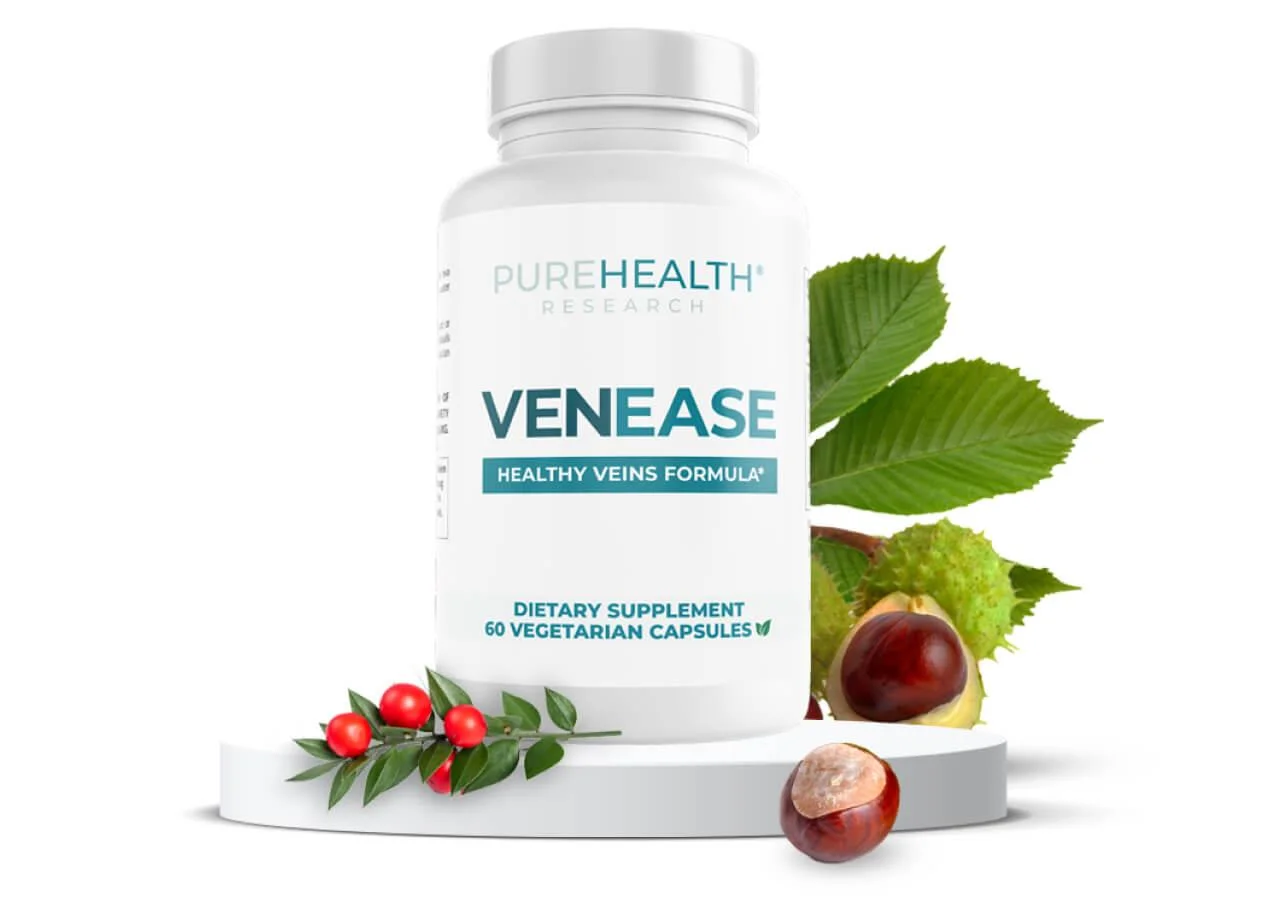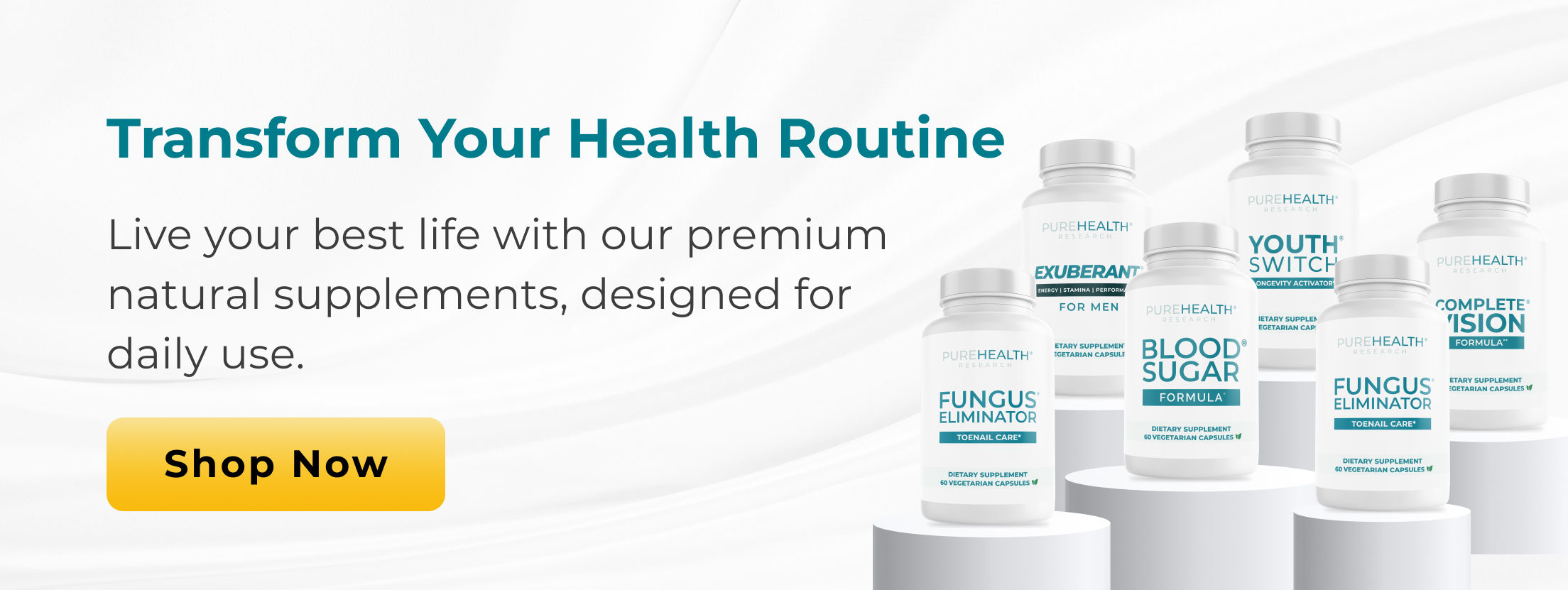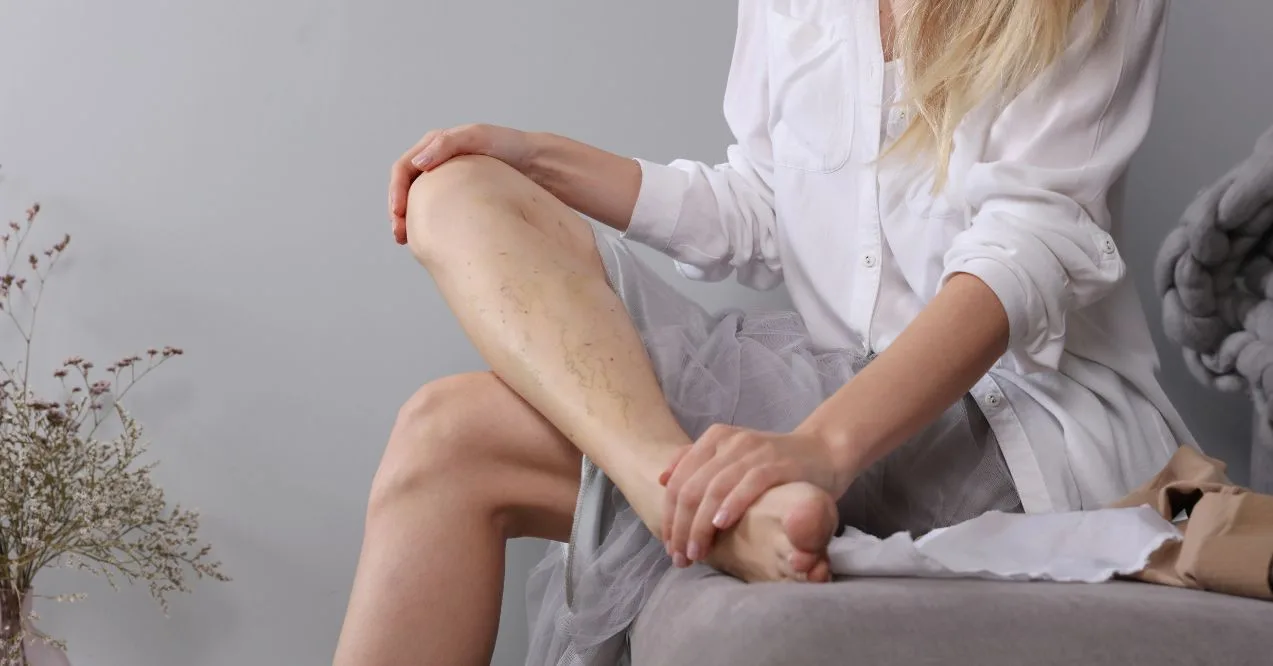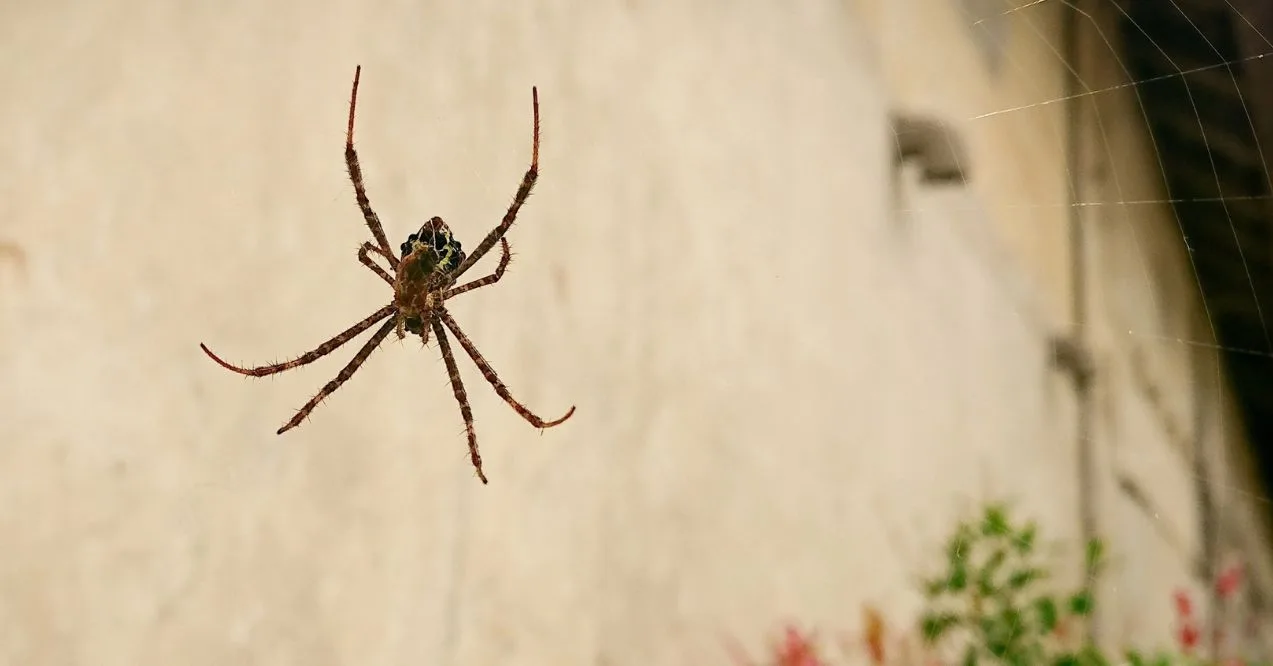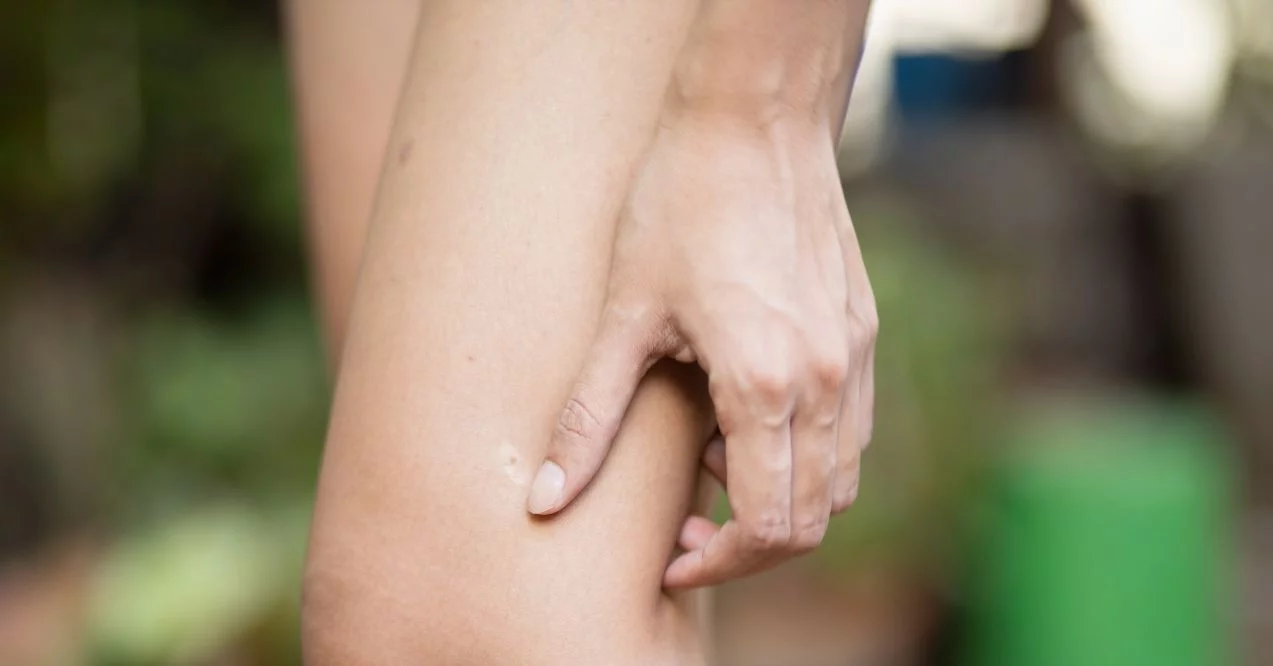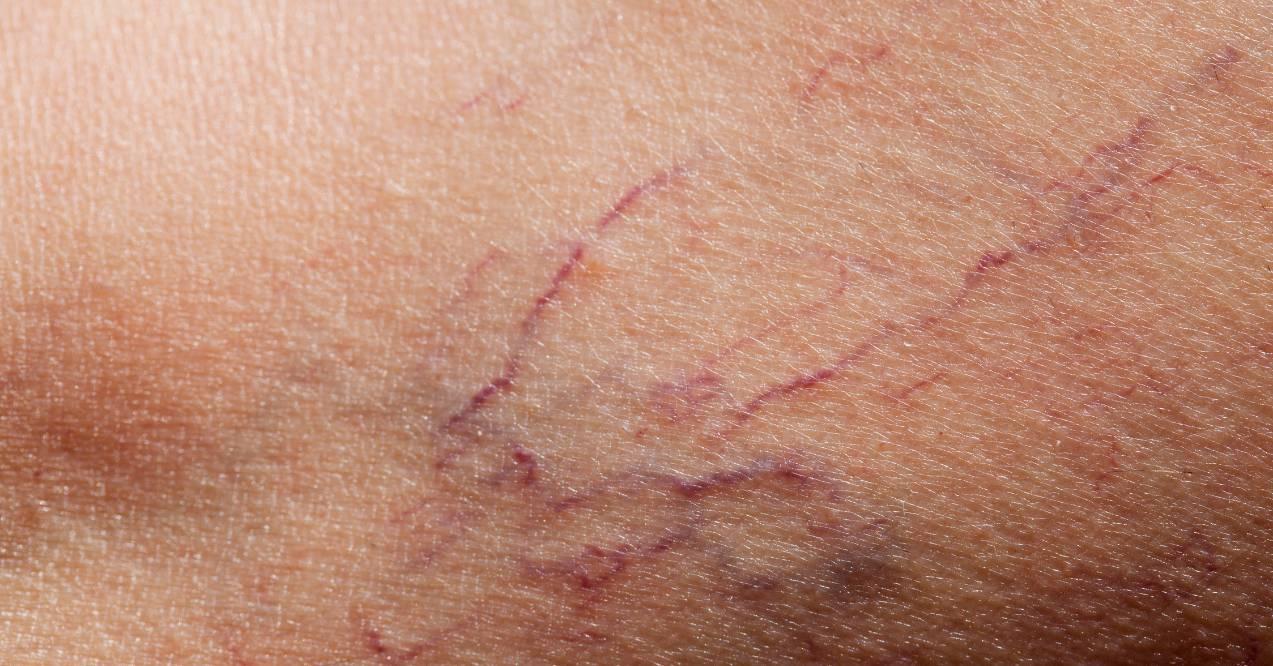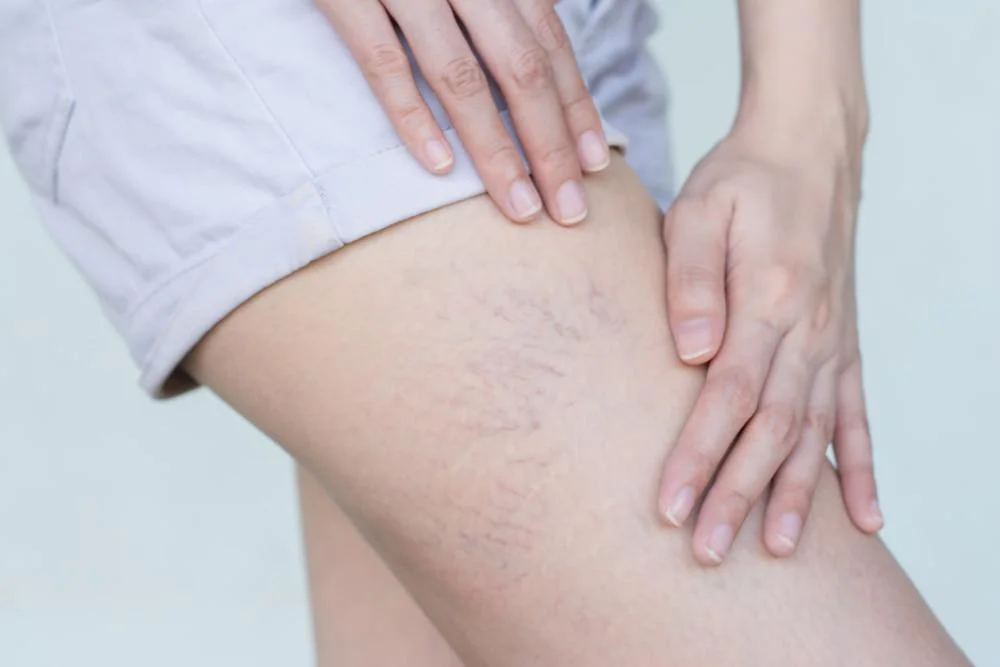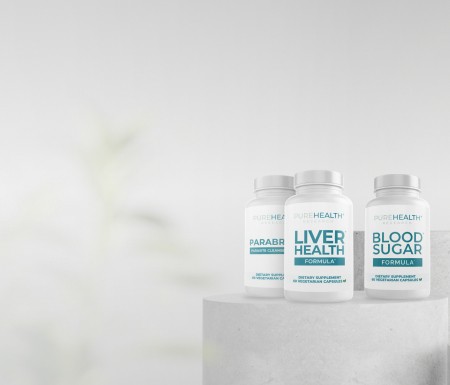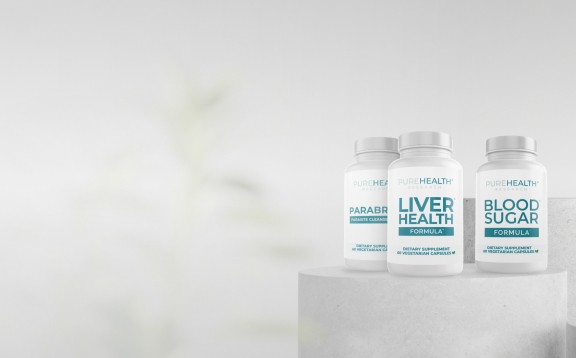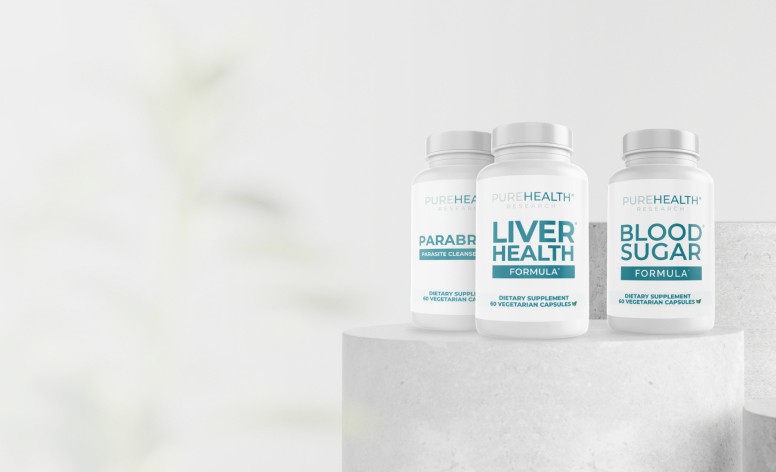Are Spider Veins Dangerous? Fact or Fear
Medically reviewed by our experts
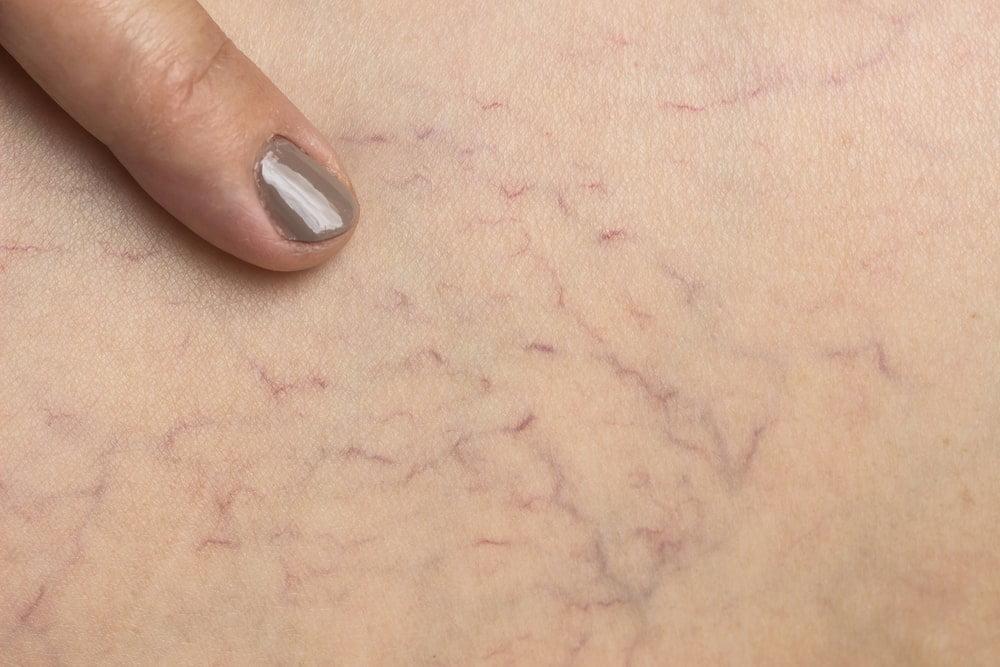

Are spider veins dangerous? People usually question if these seemingly minor aesthetic issues offer any significant damage to their health. Spider veins, also known as telangiectasia, are small, dilated blood vessels that appear close to the skin’s surface, resembling thin red or purple lines. While spider veins may be concerning from a cosmetic standpoint, their impact on a person’s overall health is often a subject of debate for both medical professionals and the general public.
Spider veins can sometimes indicate an underlying venous insufficiency or circulation disorder. Although most cases of spider veins do not cause physical discomfort or pose immediate health risks, they can occasionally lead to symptoms such as leg pain, heaviness, or swelling if ignored. Therefore, dismissing spider veins solely as a cosmetic issue would be an oversimplification.
To better comprehend the nature of spider veins and their potential implications, it is essential to delve into the risk factors and associated conditions of this vascular problem. In this article, we will examine the underlying causes of spider veins, debunk some common misconceptions, and explore the available management options. By understanding the characteristics that contribute to the development of spider veins and recognizing their potential implications, you can proactively manage your vascular health. Read on!
What are Spider Veins?
Most adults have witnessed the appearance of these tiny, web-like, branching veins beneath their skin on the face or legs at some point. If you’re one of them, perhaps their sudden appearance in your own body is why you’re reading this article in the first place. Also known as thread veins, spider veins are red, purple, or blue blemishes that tend to seem pretty harmless. They happen when capillaries — the smallest blood vessels in the body that arteries connect to veins — become visible at the skin’s surface.
People frequently find it difficult to distinguish between spider veins vs varicose veins. Yet, there is no doubt that varicose veins require more care than their more superficial counterparts. Although they both twist and bend, varicose veins are larger and more swollen than spider veins. They appear rope-like when they bulge and tend to develop deeper in the skin’s surface compared to spider veins. It’s important to note that any area of the body might develop both varicose and spider veins at any given point for numerous reasons.
Spider veins and varicose veins are both manifestations of venous disease, but they represent different stages of its development. Often unnoticed due to their minimal discomfort, spider veins are the initial phase. The second stage is the appearance of varicose veins, which often require attention to prevent progression to more severe phases. These subsequent stages include edema, characterized by swelling in the lower leg. The final phases of venous disease encompass varicose eczema and leg ulcers.
There are common misconceptions about spider veins. One is the belief that sclerotherapy, which destroys the blood vessel, is the only option available when in reality, there are various therapies available. Additionally, there’s the “spider veins are dangerous” myth. This irregularity won’t pose an immediate threat.
However, it can have adverse effects over time, especially when combined with blood clots. Dismissing spider veins and varicose veins as solely cosmetic issues is also problematic. Both can indicate underlying medical conditions such as deep vein thrombosis and chronic venous insufficiency.
It is vital to prioritize physical fitness to prevent the development of spider veins. By adopting a healthy lifestyle, you can significantly reduce the likelihood of encountering these unwanted venous conditions.
Are Spider Veins Dangerous?
In short, spider veins by themselves do not pose a significant health risk. Some studies show that most adults aged thirty to fifty will encounter spider veins at some stage of their lives. It’s important, however, to identify and alleviate them promptly to avoid complications, although these are uncommon.
It is normal for people to ask themselves: are spider veins dangerous? Are spider veins bad? How to treat spider veins on face? Well, spider veins are usually not dangerous but they might suggest the presence of Chronic Venous Insufficiency (CVI), which can have negative consequences and lead to symptoms like leg swelling, discomfort, and skin changes if not addressed. Fortunately, CVI responds to therapies.
Spider veins can affect both men and women, but studies show that the latter are more likely to experience them than the former, particularly after one or two pregnancies. Hormonal changes and increased pressure on the veins due to weight gain during pregnancy are contributing factors to the development of spider veins in women.
Consulting with a healthcare professional can help determine the best course of action for managing spider veins and addressing any potential underlying issues. Early intervention and appropriate attention can alleviate symptoms and reduce the risk of complications, and promote optimal vein health for both men and women.
What Happens if Spider Veins Are Ignored?
You might still be wondering, is spider veins a dangerous condition? It’s not. In fact, venous disease is pretty harmless at that stage. However, neglecting the signs of spider veins can have regrettable consequences in the future, even though it is usually a manageable problem. Some of these issues include:
1. Development Into Varicose Veins
Since spider veins and varicose veins can coexist, the former could serve as the precursor to the development of the latter. After all, spider veins are a potential indicator of poor blood circulation and vein damage. Many individuals who have spider veins also tend to have varicose veins at some point, as they have similar causes and risk factors.
2. Discomfort
Spider veins can worsen and cause discomfort and affect daily activities. They may multiply and result in feelings of restlessness, accompanied by sensations of pain or burning, particularly after extended periods of sitting or standing. Engaging in routine tasks can become challenging as the legs may feel heavy and swollen, impacting mobility.
3. Emotional Distress
Spider veins can also have an emotional impact, causing distress and affecting self-esteem. The visibility of these veins on the skin can lead to feelings of embarrassment or self-consciousness, potentially impacting one’s confidence and body image. Seeking help can alleviate these emotional concerns and restore a sense of well-being.
4. Skin Ulcers
In some cases, spider veins can lead to the development of skin ulcers. This condition typically occurs near the ankles and is characterized by open sores that may cause great discomfort and slow to heal. Prompt medical attention is crucial to prevent complications and promote proper healing of the ulcers.
Underlying Medical Problems That Could Arise From Spider Veins
Although not necessarily dangerous, spider veins still need close monitoring and timely attention if they become problematic to any extent. Spider veins can be an indicator of underlying venous insufficiency that may require appropriate management. Otherwise, it could lead to the following issues:
Chronic Venous Insufficiency (CVI)
As mentioned earlier, Chronic Venous Insufficiency occurs when the veins in the legs are unable to efficiently return blood to the heart. Some characteristic symptoms of this condition are leg swelling, discomfort, aching, heaviness, and skin changes. Prolonged standing or sitting, obesity, genetics, and previous blood clots are some contributing factors that increase the likelihood of suffering from this ailment.
While CVI can significantly impact your quality of life, options include lifestyle changes, compression therapy, medications, and, in some cases, minimally invasive procedures or surgery to improve venous circulation. Consulting a healthcare professional is crucial for proper diagnosis and personalized management of CVI.
Bleeding
Bleeding caused by spider veins is a relatively rare occurrence but can happen in certain cases. When spider veins become fragile or are subjected to trauma, such as excessive scratching or injury, they may rupture and result in bleeding. The bleeding is typically minor and stops on its own or with minimal intervention. However, in some instances, bleeding from spider veins may be persistent or require medical attention to control. It is important to handle spider veins with care and avoid actions that could lead to injury or irritation, minimizing the risk of bleeding.
Causes of Spider Veins
Spider veins do not appear out of thin air. When the valves in our veins become weak, they fail to efficiently push blood in one direction towards the heart. Consequently, some amount of blood may flow in the opposite direction, causing it to pool inside the veins. This blood accumulation exerts pressure on the vein walls, resulting in bulging and often leads to spider veins.
Spider veins can have a variety of causes. Genes, for example, are the main contributing factor affecting the strength of vein walls. Therefore, you are more likely to develop them if a family member has suffered from this ailment in the past. Hormonal shifts and imbalances are another reason for vein wall and valve damage, causing them to dilate and malfunction. Some people also develop spider veins due to hormonal changes brought on by pregnancy, puberty, or menopause.
Additionally, spider veins can appear when you have a sedentary life. That’s why you should avoid standing for extended periods, staying stationary for a prolonged amount of time, and spending too long sitting down. But are spider veins bad? As long as there are no severe symptoms, they are most likely nothing to be too concerned about.
Medical Procedures for Spider Veins
Because spider veins are somewhat common, there are numerous procedures and therapies that can help slow down their progression. Some of the most popular are:
1. Sclerotherapy
Sclerotherapy is one of the popular methods for spider veins. It involves injecting fluid into the veins that are damaged, causing the vein walls to expand and become closely connected. As a result, the area will be unable to get blood flow, and astonishingly, the spider veins will disappear over time.
2. Endovenous Laser Therapy (EVLT)
This procedure destroys the vein walls using heat from a laser. After that, the body absorbs the therapy-created dead cells, which also destroys the aberrant veins. Endovenous Laser Therapy (EVLT) is available to almost everyone who has spider veins. For those few who do not fit this option, sclerotherapy is always an option.
3. Laser Therapy
Laser therapy for spider veins is a non-invasive and effective option. It involves the use of targeted laser energy to safely and selectively destroy spider veins, resulting in their gradual disappearance. This procedure is quick, relatively painless, and requires no downtime, making it a popular choice for those seeking smoother, vein-free skin.
4. Radiofrequency Occlusion
Radiofrequency occlusion is a minimally invasive procedure for spider veins. It involves using radiofrequency energy to heat and close off the affected veins. This procedure is effective in reducing the appearance of spider veins and improving circulation. It is a safe and efficient alternative to traditional vein stripping surgery, offering patients quicker recovery times and minimal scarring.
5. Veinwave or Thermocoagulation
Veinwave and thermocoagulation are two popular therapy options for spider veins. Veinwave utilizes radiofrequency technology to target and collapse the affected veins, while thermocoagulation employs heat energy to seal the veins shut. Both procedures are minimally invasive, safe, and effective in reducing the appearance of spider veins, restoring smoother and clearer skin.
Nevertheless, learning how to cover spider veins on legs can also be beneficial. By exploring different covering options, you may feel more confident and comfortable with their appearance while undergoing treatment or awaiting visible changes.
Symptoms of Spider Veins
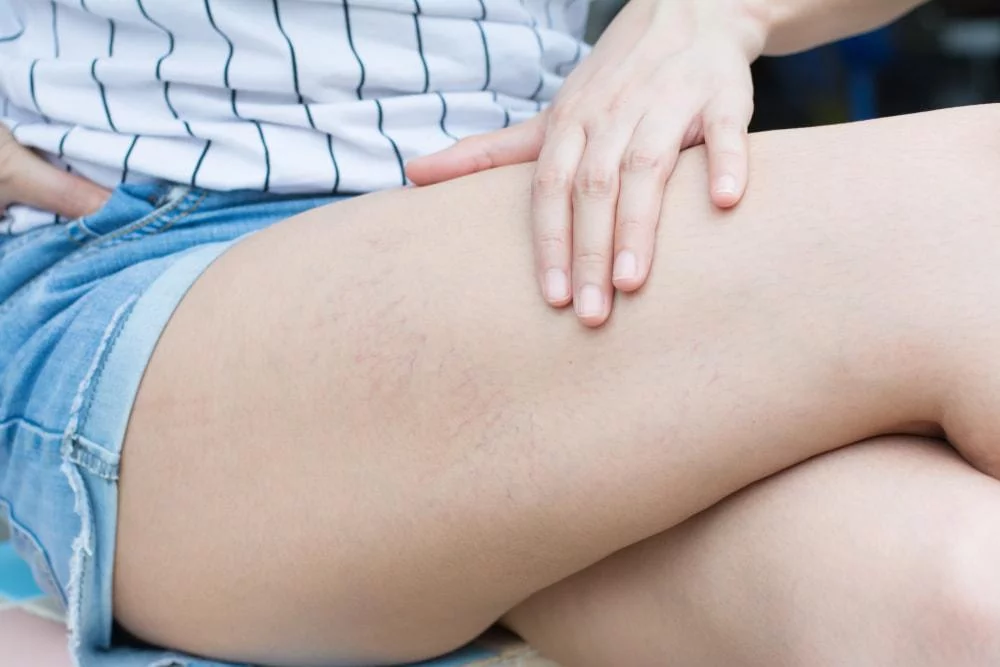
Spider veins are typically self-diagnosable and easy to identify. By solely looking at their visual appearance, you can quickly determine if you suffer from this common vascular condition. However, there are other symptoms of spider veins besides the outward manifestation we already highlighted. For example, mild to moderate itching can happen on the visible portion of your spider veins. Additionally, there may be cramping or swelling, most commonly affecting your ankles after prolonged standing or sitting.
Spider veins can also disrupt your sleep and get worse in warm conditions. Moreover, you can experience some burning in the affected area, and the surrounding skin could become dry or scaly. In severe circumstances, people with spider veins may develop a sensitivity to the touch. However, it’s extremely rare to have incapacitating discomfort from this ailment.
So are spider veins dangerous? While spider veins are generally harmless and do not produce any other symptoms, it is important to consult a doctor if you experience any of the signs listed above or if you have concerns about any underlying conditions. A healthcare professional can provide appropriate diagnosis, advice, and potential treatment options to address any medical or cosmetic concerns associated with spider veins.
Dietary Supplements For Symptoms and Prevention
Dietary supplements have gained popularity as an alternative method to reduce the appearance and severity of varicose and spider veins.
Not only does VenEase include the incredible four, but it is also gluten-free, non-GMO, vegan, soy-free, and dairy-free. The evidence-backed nutrients in VenEase by PureHealth Research, target the mechanisms that cause spider veins, swollen legs, leg discomfort, and itchiness. The formula is designed to nourish the tone of your veins, support healthy immune responses, and help regain the power and flexibility in your legs.
Dr. Holly Lucille ND, recommends individuals suffering from spider veins to use VenEase.
Be aware that for best results you should take supplements for vein health based on certain directions. For best results as a dietary supplement, take two (2) capsules once daily, 20-30 minutes before a meal with 8 oz. of water. As with any other supplement, you should ask your primary health care provider before taking VenEase. Do not use it if you are a nursing mother, pregnant, or under the age of 18 years.
Final Thoughts
Are spider veins dangerous? Spider veins are not a cause for concern in the majority of cases. However, we should not disregard the reality that spider veins can occasionally be problematic. They can be uncomfortable for some individuals. They may also be a sign of underlying health issues as read above.
Having discussed the signs of spider veins and untrue myths, you should make it a routine to get checked out anytime we observe these signs. You also need to take preventive measures such as regular exercising, maintaining a healthy diet, and avoiding extended periods of sitting and standing. Give your legs some TLC, starting today!
Spider veins can be caused by weakened vein valves, genetics, hormonal changes, prolonged standing or sitting, and lifestyle factors. Pregnancy, puberty, and menopause can also play a role.
Treatment options include sclerotherapy, endovenous laser therapy (EVLT), laser therapy, radiofrequency occlusion, veinwave, and thermocoagulation, all aimed at reducing or eliminating spider veins.
Yes, the visibility of spider veins can lead to feelings of embarrassment or self-consciousness, potentially impacting one’s confidence and body image.
Popular Articles
Advertisement. This site offers health, wellness, fitness and nutritional information and is designed for educational purposes only. You should not rely on this information as a substitute for, nor does it replace, professional medical advice, diagnosis, or treatment. If you have any concerns or questions about your health, you should always consult with a physician or other health-care professional. Do not disregard, avoid or delay obtaining medical or health related advice from your health-care professional because of something you may have read on this site. The use of any information provided on this site is solely at your own risk.
